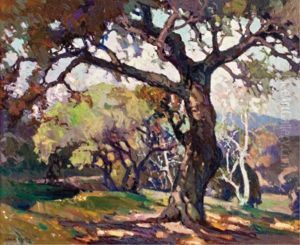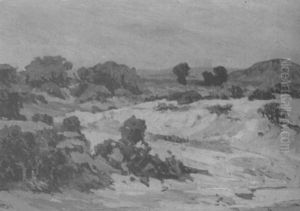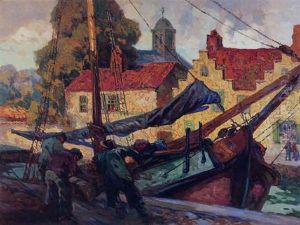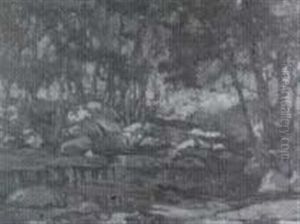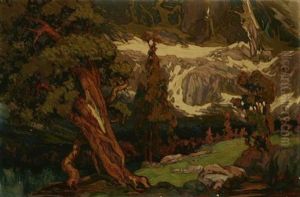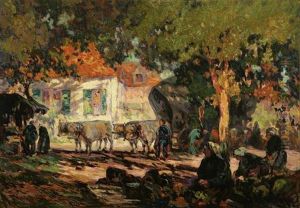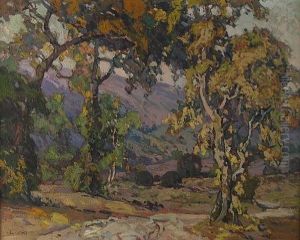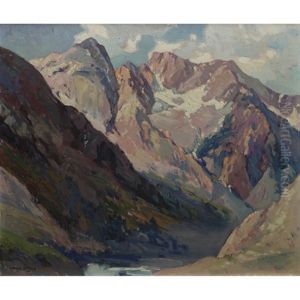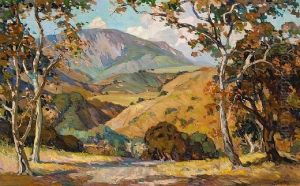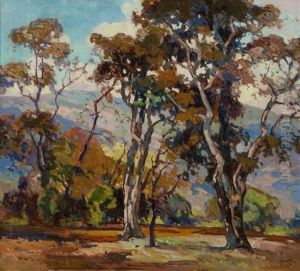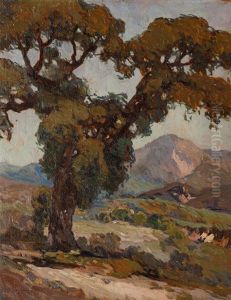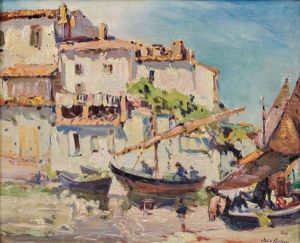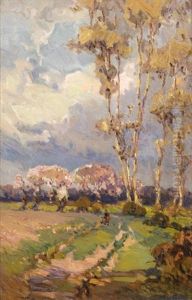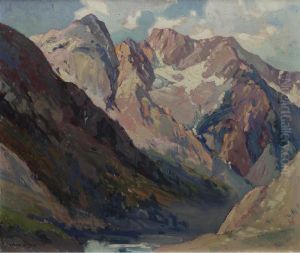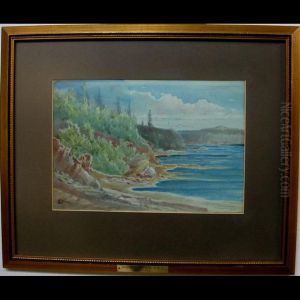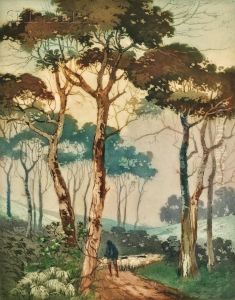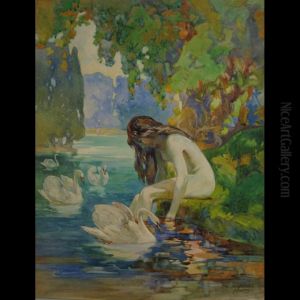John Wesley Cotton Paintings
John Wesley Cotton was an American painter born on November 20, 1869, in Tipton County, Indiana. He is perhaps best known for his landscape paintings, which often depict the American Southwest. Cotton's artistic journey began at an early age, and he was largely self-taught in his early years. His initial works were influenced by the tonalism and impressionism movements, which were popular during his time.
As he matured as an artist, Cotton's style evolved, and he became particularly interested in the unique light and color of the landscapes he encountered during his travels in the American West. His work was characterized by a vibrant palette and a focus on the atmospheric effects of light, which he used to capture the mood and spirit of the places he painted.
In addition to his painting, Cotton was also an art educator. He taught at the Herron School of Art in Indianapolis for a period of time before moving to Arizona for health reasons. The dramatic landscapes of Arizona had a profound impact on his work, and he spent much of his time capturing the beauty of the desert and its environs.
Cotton's contributions to American art were recognized during his lifetime, and his paintings were exhibited in various galleries and museums. Despite his modest success, he remained a relatively private individual, dedicated to his craft and the exploration of the natural world through his art.
John Wesley Cotton passed away on September 9, 1931, in Phoenix, Arizona. Today, his work is part of several art collections and continues to be appreciated for its unique depiction of the American landscape. Cotton's legacy is that of an artist who sought to convey the essence of the environments he loved, marking him as an important figure in the development of American landscape painting in the early 20th century.
